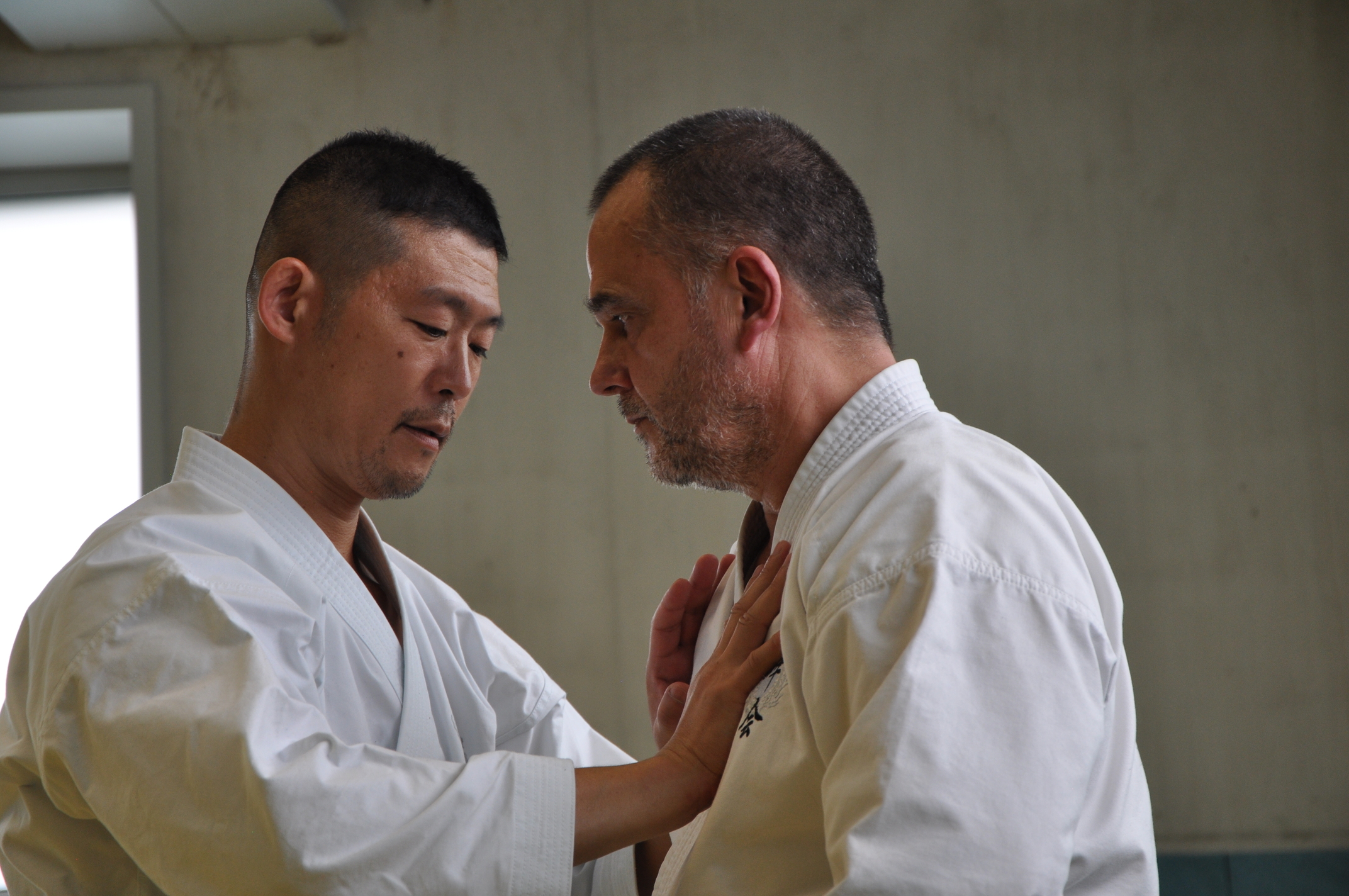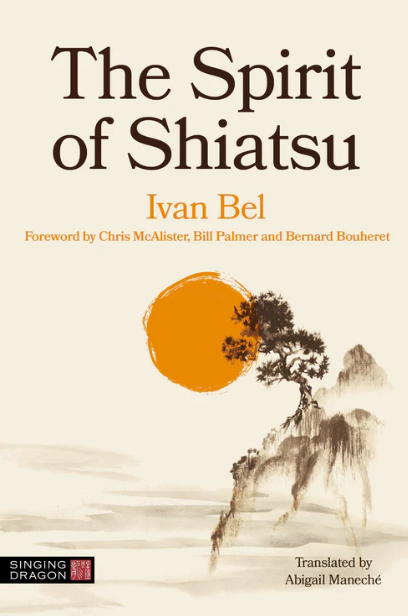Manabu Watanabe is one of those people who can speak in depth about the martial arts. For over 10 years, he was the disciple and assistant of Minoru Akuzawa, the extraordinary founder of Aunkai. Anyone who has ever seen Akuzawa Sensei perform his movements knows what phenomenal power he can develop. Watanabe Sensei has decided to put this power to good use in Shiatsu. Now living in Paris, he is developing his Shyuyou Shiatsu school throughout France. Meet a master who lives by and for the principles that underpin Shiatsu and martial arts techniques.
Hello dear Manabu, and thank you very much for taking the time to answer our interview request. You’re a Shiatsu teacher in Paris, but few people really know you. So let’s start with a simple question: where and when were you born?
My name is Manabu Watanabe (渡辺学). I was born on August 23, 1972 in Tokyo. The name “Manabu” comes from the fact that my parents wanted me to learn everything honestly.
Incidentally, my older sister’s name is Keiko. The meanings of the kanji are different, but keikoto also means learning the arts, martial arts, techniques and so on.
What kind of family did you grow up in? What did your parents do? What kind of child were you?
My parents were civil servants, and my mother became a housewife after giving birth to my sister. This was common practice in Japan at the time. When I was little, I used to go and play in the little forest near our house and in the park.
I was a curious child. I spent my childhood in the Showa era (autor’s note: 1926-1989), so there was no Internet and I played outside with my friends every day after school.
Today, you’re in your fifties. Looking back, how do you view this period of your life?
When I was a kid, I thought people in their fifties were old people, but now that I’m in my fifties, I don’t feel much of a change.
For almost half the last century, I’ve made researching the human body my life’s work, and I think I’ll continue to do so in the future.
From a numbers point of view, I’m already in the second half of my life, so I feel I have to hurry up and do what I can now.
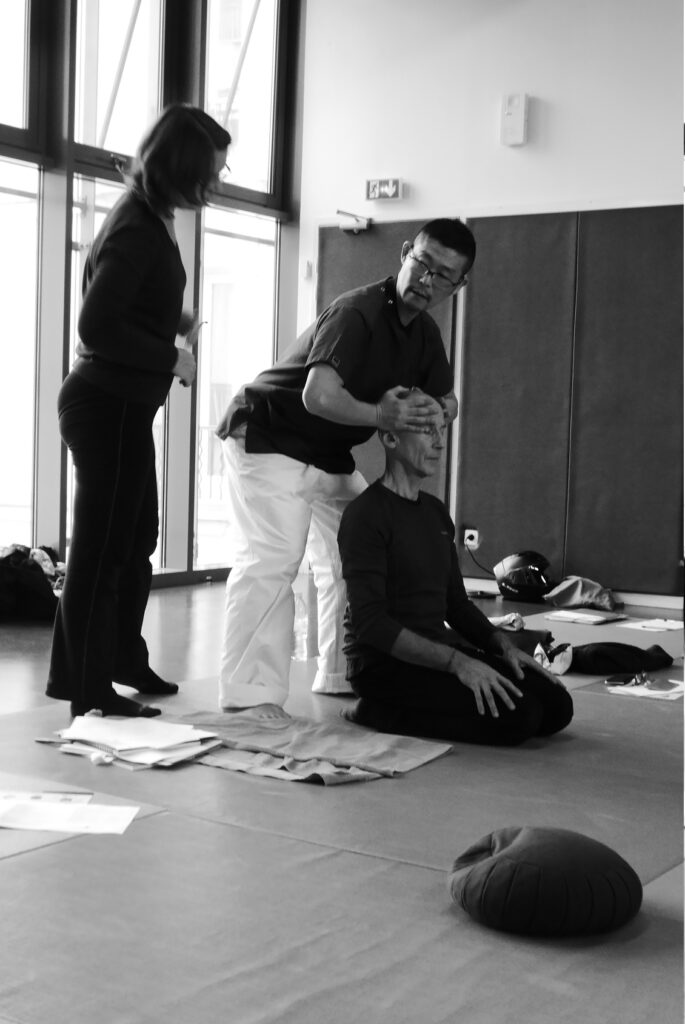
I feel the same way. After school, what did you study in Japan?
After graduating from high school, I entered university.
I chose international studies (kokusai gakubu, 国際学部) because I wanted to study abroad.
I learned the English language, global economics and so on. I was particularly interested in comparative cultural theory (hikaku bunka ron, 比較文化論 ). At the time, it was just a matter of interest, but later I was able to develop a basis for comparing and observing the way people use their bodies between the West and the East.
When I was a student, I played Western sports (tennis). At the time, I only did bodybuilding as a supplement.
If I’d known how to use the body differently, I might have become a bit better at tennis.
In the few articles we can find about you, you say that you used to be a “salaryman”. What does that mean? What did you work in?
My father was a civil servant. When I was in high school, I was against the idea of following the same path as him.
Then I went to university, but my idea didn’t change, and since I’d had the experience of working as an office clerk, I wanted to confirm that my intentions were true, so I decided to accept a salaried job (in sales). I worked for five years as a salaried employee. These five years have been put to good use in my current Shiatsu work, as I can now better understand their problems.
Is that when you became interested in healing techniques and martial arts? Why or why not?
After three years of working as a salaried employee, and due to the stress of my job, I felt a pain in my lower back that I’d never experienced before. That’s when I started thinking about my body and my health. I’ve loved physical activity ever since I was a child, and in my fourth year as an office worker, I started to do some research, which led me to discover a whole new world of possible treatments.
In addition, the experience I had on a business trip to Okinawa was a major trigger in changing my mindset. Okinawa is a tropical country where people are very open-minded. The ocean is magnificent and time passes slowly. It was a culture shock for me, who was always pressed for time at work.
One day, a friend from Okinawa took me to a sacred place where ceremonies were held under the Ryukyu dynasty. At Sefa Utaki (斎場御岳)[i], I felt a mysterious force rise in my body, even though I didn’t know it at the time. Since then, I often go to Okinawa when I have a bit of free time to feel the energy of nature.
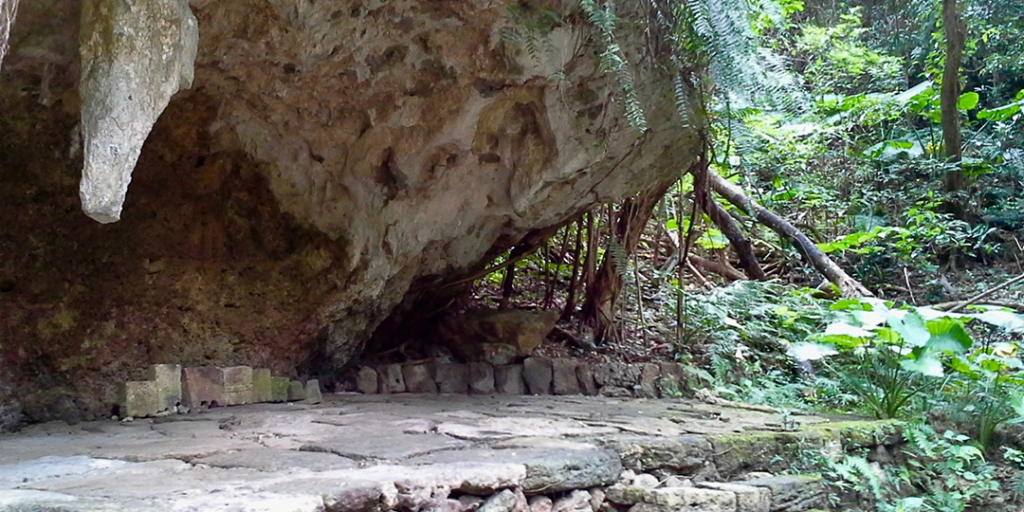
Since then, I’ve started thinking about a new direction for my life.
As far as martial arts are concerned, my interest goes back to the time when I joined the Chinese Medical College, after leaving my company. One of my classmates was studying Chinese martial arts (Bajiquan) and I became interested. A meeting with the husband of another classmate also revolutionized my mind. “Everything is based on principles,” he said, and if you could really understand principles, you wouldn’t categorize things as martial arts or healing. Since I met him, I’ve become more interested in my culture, and I’ve come to understand just how profound it is.
After this encounter, I studied Systema, Aunkai and Shiatsu, and I believe it was thanks to my meeting with him that I was able to open a Shiatsu training school. Even today, through various activities, I strive to understand the essence of these words.
In Japan, did you already use the Alexander Technique, moxibustion, Seitai and Rolfing, and if so, in what context?
The first treatment method I learned was Chinese medicine. I started by studying Tuina[ii], then became interested in Chinese acupuncture, so I concentrated on studying acupuncture. After graduating, I experimented with various manual therapies and bodywork to understand their principles. These included chiropractic, Noguchi Seitai[iii], Alexander Technique[iv], Rolfing[v] and so on.
I couldn’t understand the essence of the technique simply by learning it, so I actively tested it on patients. Now that I think about it, I feel like I used them as guinea pigs, so I’m sorry and grateful to them. (laughs)
You’ve also studied Koido Koyuhō. What is Koido Koyuhō?
I took a course in ancient Shintō (Ko Shintō古神道) as part of learning universal principles (NDR: of which Koido Koyuhō, i.e. ancient medicine 古医道, is a part). Ancient Shintō is the Shintō that the Japanese believed in before the introduction of Buddhism. Today’s Shintō is influenced by different religions such as Buddhism and Hinduism. Ancient Shintō [Vi] is unique in that it includes a variety of rituals, such as blessings, spells and health methods, compared to modern Shintō. I was interested in the ancient breathing techniques of Shintō, so I learned from a Shintō priest named Tatsuo Nagakawa (永川辰男), who is the representative of Rakukosha (楽古舎)[Vii].
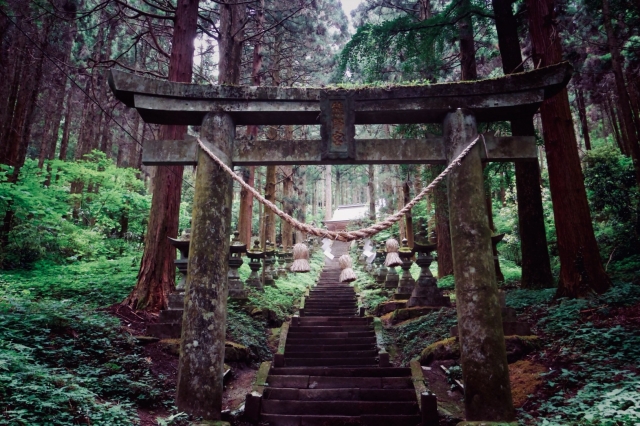
I wanted to understand the significance of Shiatsu and Japanese manual therapy, by familiarizing myself with the original form of Shintoism. I also wanted to know the meaning of natural healing power.
But Ko Shintō is very deep to understand, which is why I’m still studying.
In the martial arts, you were practicing Russian Systema, and then very quickly you met Master Akuzawa. Can you tell us about your early days with him? How did you meet him?
After graduating in Chinese medicine, I decided to try martial arts out of curiosity, so I started Systema. At the time, Systema was a very minor martial art in Japan, so I became interested in it.
After my second Systema class, I met a student who was doing Aunkai and heard about Akuzawa Sensei for the first time. However, as I had just started Systema, I didn’t go any further. Six months later, the same student informed me that Akuzawa Sensei was organizing a small training session near my workplace, and I went. It was the first time I’d met him. Although he was smaller than me, I still remember feeling an incredible power.
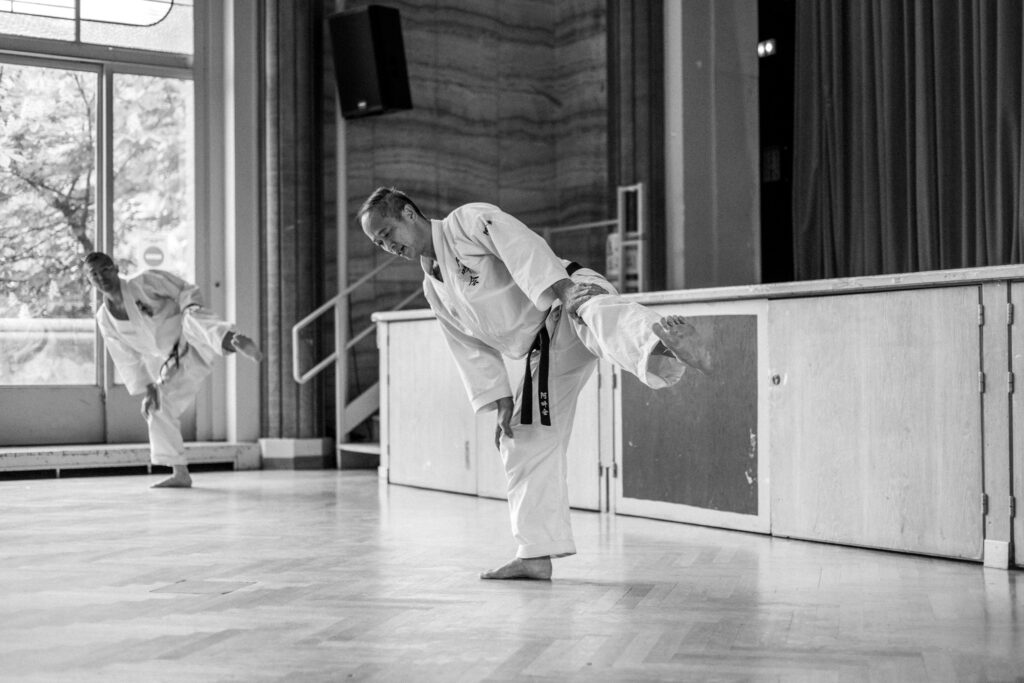
I remember seeing you in 2013 when you were his assistant in Paris. He would send you flying in all directions with incredible energy. I imagine that studying alongside him and being his assistant in the Aunkai technique must have been an incredible and intense experience. Tell me about it.
As I had only been practicing systema for about six months, I was very much Akuzawa Sensei’s uke. I had little experience in the martial arts and this allowed Sensei to experiment with all sorts of things.
By serving as my teacher’s uke, I learned to accept things instead of fighting them. This was decisive in my quest to discover the principles. But I didn’t realize how important it was at the time (10 years ago).
When I returned to Japan this summer, I was also able to feel Akuzawa Sensei’s evolution. It was incredible to see how much he continues to improve.
Was it during these years with Akuzawa Sensei that you began your Shiatsu studies at the Namikoshi School in Tokyo? Can you tell us about your three years at the Japan Shiatsu College?
I joined the Namikoshi Gakuen (NDR: 学園 gakuen means school) in 2010. Until then, I had learned various techniques, but I felt that something was missing. What attracted me to Shiatsu was that the technique itself was very simple, as was the practice of Aunkai. I decided to enrol because I felt there was depth behind this simplicity.
My three years of study were very enriching. Although they were only half-day courses, we had classes from Monday to Saturday and, in each session, we studied subjects such as acupressure techniques, anatomy, physiology, pathology, rehabilitation and oriental medicine. Once you’ve graduated from Namikoshi Gakuen, you can sit the Japanese national qualification exam. So we studied hard to get our diploma and pass the national exam. Even when I was studying Shiatsu, I went to France twice a year as Mr. Akuzawa’s assistant. I miss the days when I was a student and looked forward to attending classes.
What aspects of Oriental medicine are covered at Namikoshi Gakuen?
At the Namikoshi School, we also study Oriental medicine. The content focuses on the basics (yin/yang, meridians, 5 elements…). But we don’t go as far as the acupuncture schools. The reason for this is that Namikoshi Shiatsu is mainly based on Western medicine.
Seen from a European perspective, one imagines relatively intense studies. How did you practice? At the school clinic or elsewhere?
I’ve worked in several Japanese clinics, relaxation clinics and therapeutic clinics. Japanese therapists are eager to learn. Even after work, I would stay at the clinic and often organize training sessions. Perhaps this is one of the characteristics of the Japanese.
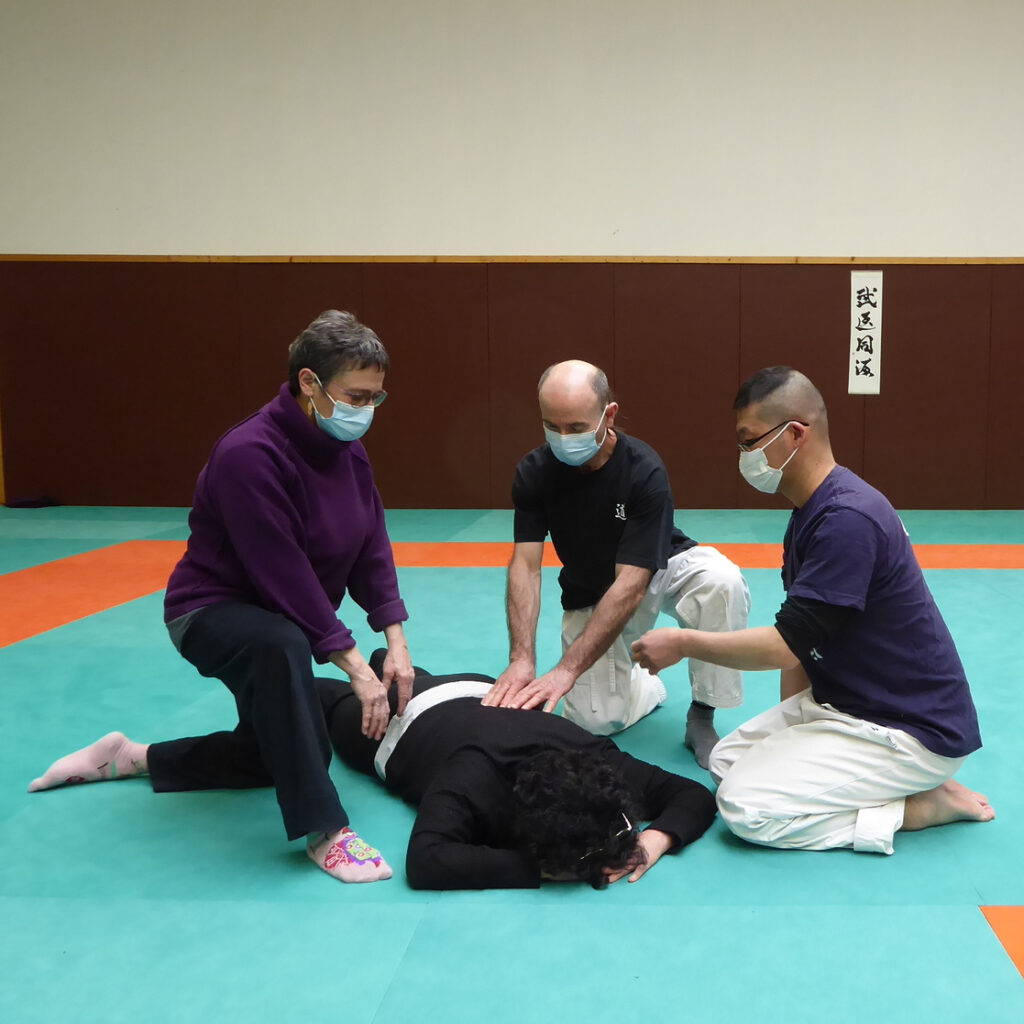
Why did you choose to study Shiatsu when you were already familiar with other recognized Japanese manual healing techniques?
Well, I was attracted by the simplicity of this manual therapy born in Japan.
With Aunkai, I imagine you’ve learned the importance of Kikentai and therefore the precise importance of body placement to release the greatest energy. Could you explain this to us in more detail, as this principle is often overlooked in the West?
First of all, we need to know the meaning of Kikentai (気剣体). “Ki” refers to the will and the workings of the heart, and refers to the ability to make decisions with a strong mind, a strong voice, and the concentration of feelings.
“Ken”, a “sword”, refers to the correct use of a shinai with a straight edge, and to the working action of a shinai.
Tai”, “body”, refers to the correct handling of the body and posture, which means entering correctly and striking.
In Aunkai, we don’t use the word Kikentai. But what we do practice is the spirit of Kikentai. We practice posture in depth, in order to move correctly and understand Naido (internal bodywork).
To do this, Aunkai uses the rokushaku bō[viii].
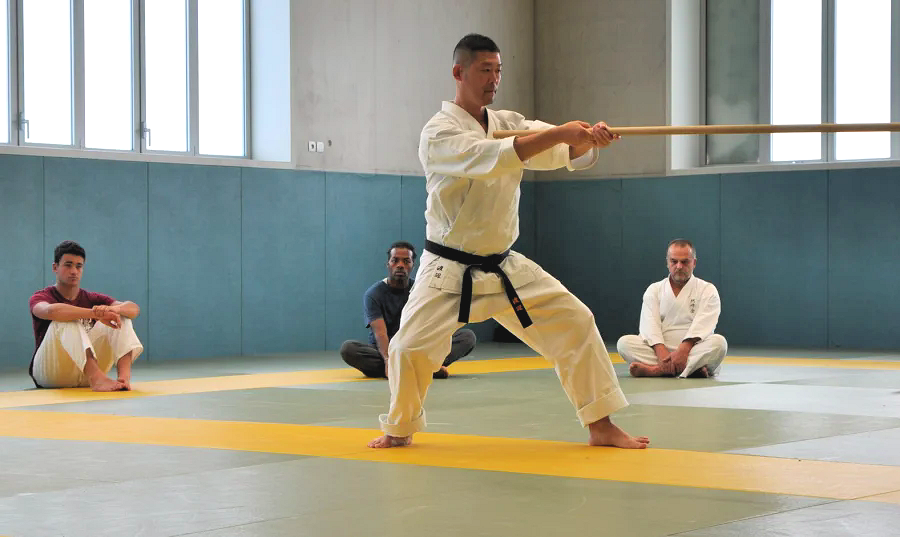
You taught Aunkai yourself in the city of Saitama (from 2013 to 2018), north of Tokyo, and opened a Shiatsu clinic. Moving from study to professional practice is always a challenge. What was it like for you?
After graduating from Namikoshi Gakuen, I worked for a company that did treatments and spent half my time doing Shiatsu in my clinic. At Kōhai’s (後輩) request, I traveled to Chiba Prefecture once a week to run the Aunkai.
Private clinic patients have high expectations, so I had to be more focused and practice with a greater sense of responsibility. Even if you learn a lot of techniques, there’s no point in learning them if you don’t sublimate them. I spent a lot of time there.
Unfortunately, I never met Professor Yasuhiro Irie Sensei, who lives in the same town (read the interview with Irie Sensei only available in French at this time).
At some point in your life, you decide to move to Paris. Why, how long have you been here, and what’s your life like in Paris?
Ha-ha, my stomach and liver have already been conquered by France. However, when it comes to the French language, I still don’t have the necessary skills. If I could speak more, I think life would be twice as pleasant as it is now. But I’m already enjoying it.
Thanks to the support of many people, including Aunkaï members in France and my current partner and one of my best friends, Alain[ix], I am able to live in France without any problems. With this gratitude, I’d like to share everything I’ve experienced here in France.
You’ve just opened your own Shiatsu school. What principles have you based your teaching on?
The reason I created Shyuyou Shiatsu (修養指圧) is because I realized I could open a Shiatsu school like no other. When I was employed in a medical practice, my body collapsed from stress. I became interested in health and entered the world of care. As I learned various techniques, I began to think that if I didn’t have the principles, no matter how many techniques I learned, I’d only go part of the way. Then I met someone who is a little outside the usual circuits (the husband of the same classmate) and I was able to explore the path of the principles with him. What I’m always looking for after entering the world of healing is: “By understanding the principle and using it, I can effectively transmit energy to the patient”.
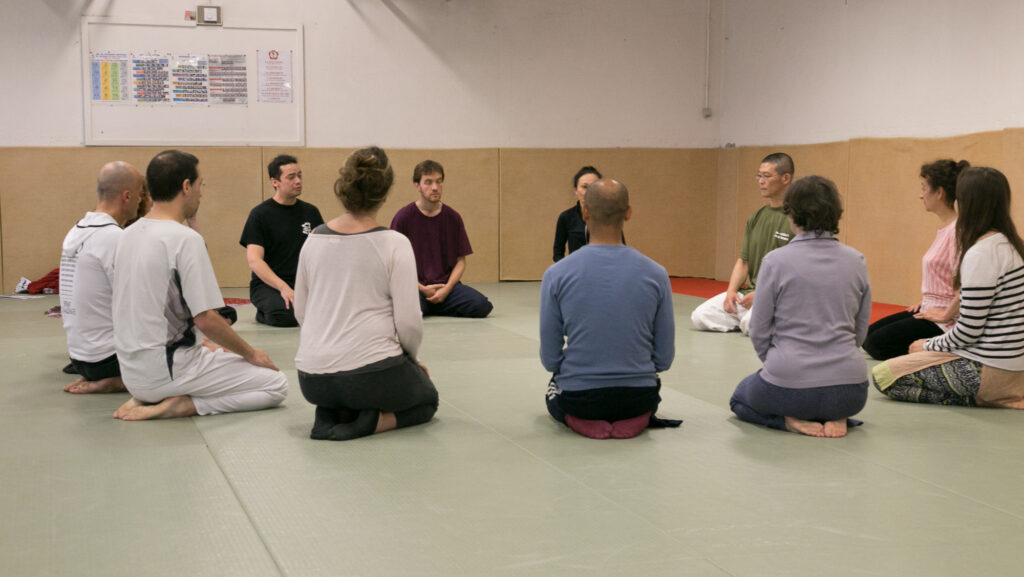
Around 2014, I felt I could pass on the techniques I’d learned for studying these principles, so I consulted Alain. He also agreed with my concept and cooperated by giving it shape. What I’d like to share through Shiatsu training is:
Learn the principles through Shiatsu and develop good health, not only for your patients but also for yourself.
1. Understand the principles and bring meaning (awareness) to everyday life.
2. Become a Shiatsu practitioner who can confidently offer sessions to patients.
Thank you very much, but I actually wanted to talk about the technical principles of your style of Shiatsu. What are they?
When we learn Shiatsu, our aim is to develop a body adapted to this practice, capable of transmitting energy to our fingertips without creating tension in our body, and to be able to provide care.
In the first year (izumi), you will learn the different principles. These are principles that enable energy to be transmitted. For example, you’ll learn a total of 11 principles such as the zero point, to understand how to stand upright and control energy, the center of gravity, to understand how to move, the chain reaction, to understand the flow of energy, and so on.
The second year is dedicated to Naikan. We activate all the body’s receptors so that the body can make the right decisions. We have sessions dedicated to breathing, development of the senses, visualization, kototama…
The third year is dedicated to Te no Uchi. You’ll learn how to become a Shiatsu practitioner, how to use the principles in a practical way, and the knowledge to do a complete Shiatsu.
In three years, you will learn the principles of correct Shiatsu techniques, palpation, diagnosis, and treatment.
You must have studied Namikoshi’s kata during your studies. But do you teach any kata yourself?
I think that kata is an excellent learning system, typical of the East. I learned Namikoshi kata at the Namikoshi Gakuen. If you learn the Namikoshi Shiatsu style, you can practice treatments that encompass the whole body.
I believe there are different levels of interpretation. The superficial understanding consists in remembering the order, the number of repetitions, the shape and position of the hands, embodying them faithfully and letting your body memorize them. The meaning of this interpretation is to learn the protocols, to understand the philosophical principles that our predecessors incorporated into them, to become one with nature and to be free.
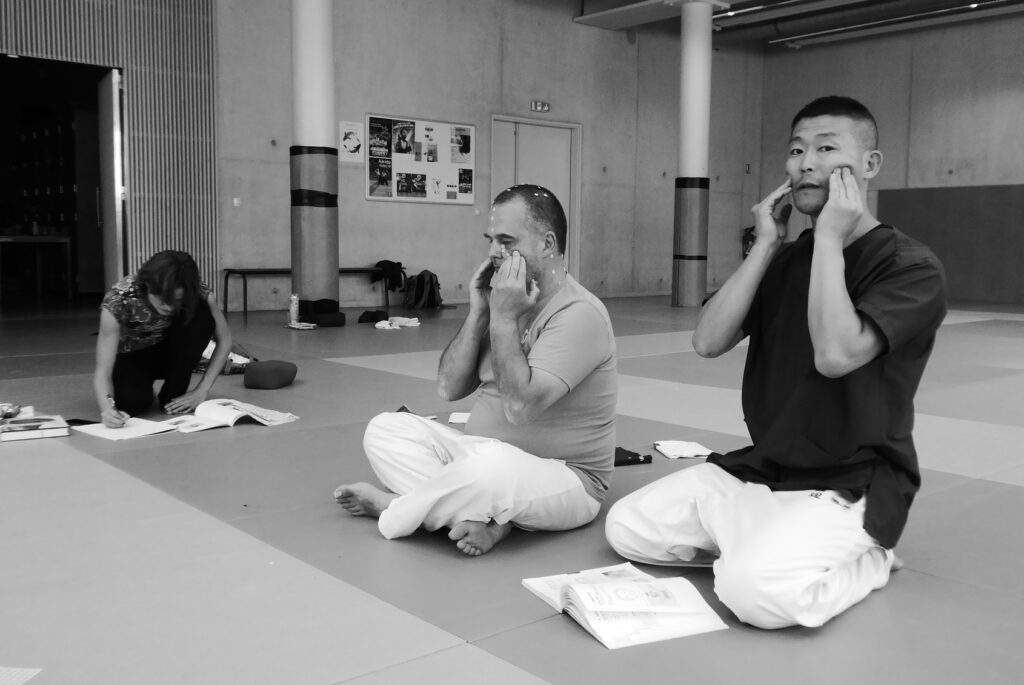
Today, I feel we have only a superficial understanding of kata. In Shyuyou Shiatsu, we don’t actually learn any kata. We concentrate on developing a body that can move freely according to principles. But I may create a kata if necessary, in the future.
While you studied Namikoshi Shiatsu, you also use Ki and meridians in your approach. How did you come to do this?
By learning the principles I’ve told you about, my understanding of Ki and the meridians has changed. I realized that if I take care of my body, I can naturally feel my Ki.
Since you’ve been in Paris and doing Shiatsu treatments, what differences have you noticed between the disorders and imbalances of French and Japanese people?
I have the impression that there’s no difference between French and Japanese patients.
With the global spread of computers and cell phones, many people suffer from stiff shoulders, back pain, headaches, and insomnia.
The Shiatsu approach can be a little different. In Japan, Shiatsu is practiced with strong physical pressure, whereas in France, Shiatsu is practiced with gentle pressure.
When it comes to patient type, the Japanese use their “atmosphere”[xii] rather than words. This is the case, for example, when they want to indicate that the Shiatsu pressure doesn’t suit them, or that they need more in-depth work on that area.
Westerners’ express things verbally, which is easy for me to understand.
Master Itsuo Tsuda, who taught the art of Katsugen in Paris, used to say that the French gave too much importance to the mind, and that being cut off from the body ultimately made them ill. Do you feel the same way?
When I arrived in Paris, I learned of the existence and achievements of Professor Itsuo Tsuda. Mr Itsuo Tsuda is one of the legends who spread Japanese culture in France, and I respect him a lot. As my level of humanity is still low, I still don’t understand what he means.
Cultures and ways of thinking differ from one country to another. It’s important to accept these things while you live in this country. At the same time as accepting it, I attach importance to understanding the common spirit of human beings.
What guides your personal research?
Our concepts at seminars are Buidōgen 武医同源[x].
Martial arts (武) are methods of killing, i.e. killing people efficiently in order to survive.
Medical care (医) is a way of life, and it’s about knowing how to use it on people effectively.
Although the idea (author’s note: martial arts and medicine) is completely opposite, the principles are the same(同源). What’s similar is that they both study human beings in depth: anatomy, biology, psychology, social interactions and so on.
I try to share this meaning handed down by the ancients with everyone through Aunkai and Shiatsu. And to bring out the hidden potential of the human being in a spirit of freedom.
In the martial arts, some people have a quality called “武徳 Butoku”, they are free from within and have the ability to bring peace everywhere, without fighting.
In the medical arts, some people possess this quality called “医徳 Itoku”, or “knowledge of life, compassion and love”. A mind that doesn’t take advantage of people, is considerate and doesn’t seek profit.
These ideas are reflected in Shyuyou Shiatsu.
To become a Shiatsu therapist, we transform the body from within through three years of study. Technique is also necessary, but as long as you want to be a therapist, you can’t master technique without changing your own essence. I think it’s this concept that makes us very different from other Shiatsu schools.
We focus on the principles and conditions required to be a true Shiatsu therapist, so it’s not just a question of skills, but also of human qualities.
The martial arts are not just about fighting; they’re about understanding relationships, logic and psychology.
The art of medicine is not just about treatment, but also about knowing life, compassion and love.
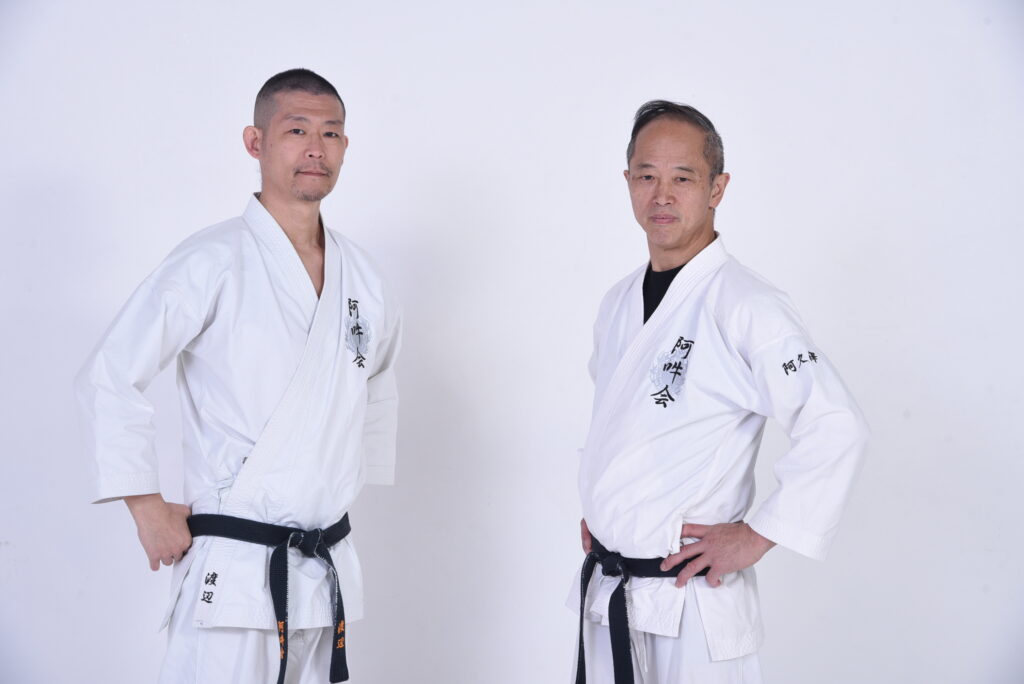
If a Shiatsu practitioner came to you because he couldn’t feel the Ki between his fingers, what advice would you give him to develop it?In the East, the word “Ki” (気) is commonly used. It is found in many expressions such as “I’m fine” (Genki 元気), “the variety of emotions I feel” (Kimochi気持ち), “my mind” (Kiai 気合), “my mood” (Kibun 気分), and “the way I behave with courage” (Kijō 気丈).
Even in teaching methods such as martial arts and Shiatsu, there are many abstract expressions rather than concrete explanations. This is particularly true of older teachers. I think this is due to the fact that Ki culture has been around for a long time. In my Shiatsu classes, I try to explain its meaning in concrete terms. I do this because there’s a great risk of misunderstanding due to the difference between knowing and embodying. I think one of Aunkai’s exercises, Tenchijin (天地人)[xi] is very useful for channeling energy. Connecting Heaven, Earth and oneself.
But first, I’d like you to come to the class and experience it for yourself.
It would be a pleasure. Thank you very much for this interview and I hope to see you on a tatami very soon.
Thank you.
To find out more
Notes
– i] Seifa Utaki is a shrine in the Nanjō region on the island of Okinawa. For more information, see the shrine page on wikipedia.
– ii] Tuina is Chinese massage therapy. Literally 推拿 means “to push and grasp”.
– iii] Haruchika Noguchi (1911-1976) is an outstanding figure in the world of Japanese therapies. He formalized Seitai in the mid-20th century. But the word 整体 (seitai) is much older.
– iv] Frederick Matthias Alexander (1869-1955) was one of the great names in posturology, the art of regulating physical disorders by regulating how the body is used and positioned. Find out more on this page of the official website.
– v] Rolfing, or “structural integration of body and movement”, was developed in the 1950s by Ida Rolf (1896-1979). More information on the official website.
– vi] Ancient Shintō is said to be “pure” because it was created before foreign spiritual influences.
– vii] To find out more about this master, see his bio on his website: Rakkosya.com
– viii] The rokushakubō means “stick of 6 shaku”. The shaku is a measure of distance equivalent to 30.3 cm. In total, the stick measures 181.8 cm.
– ix] Alain Tauch is a martial arts practitioner (Aikido, Iaido, Jyukempo, Aunkai…) and Shiatsu practitioner/teacher.
– [x] Buidōgen 武医同源: literally “martial arts and healing have the same source/origin”.
– xi] Tenchijin (天地人) means “Heaven-Man-Earth”, the ternary principle of Eastern thought.
– xii] The word atmosphere here refers to the word Fun’iki 雰囲気 (ふんいき), literally “the Ki in the cloud around us” to describe the mood, the impression.
Author
- A Milestone: The 2025 ESF Symposium in Brussels - 24 March 2025
- Austria – 19-21 Sept. 25: Shiatsu Summit in Vienna – chronic fatigue, burnout & depression - 19 December 2024
- Terésa Hadland interview: Shiatsu at core - 25 November 2024
- Book review: “Another self” by Cindy Engel - 30 September 2024
- Austria – 24-26 Oct. 25: Master Class in Vienna – Shiatsu and martial arts - 20 August 2024
- France – Lembrun Summer Intensive Course – July 6 to 12, 2025: Digestive System Disorders, Advanced Organ Anatomy, and Nutrition - 4 August 2024
